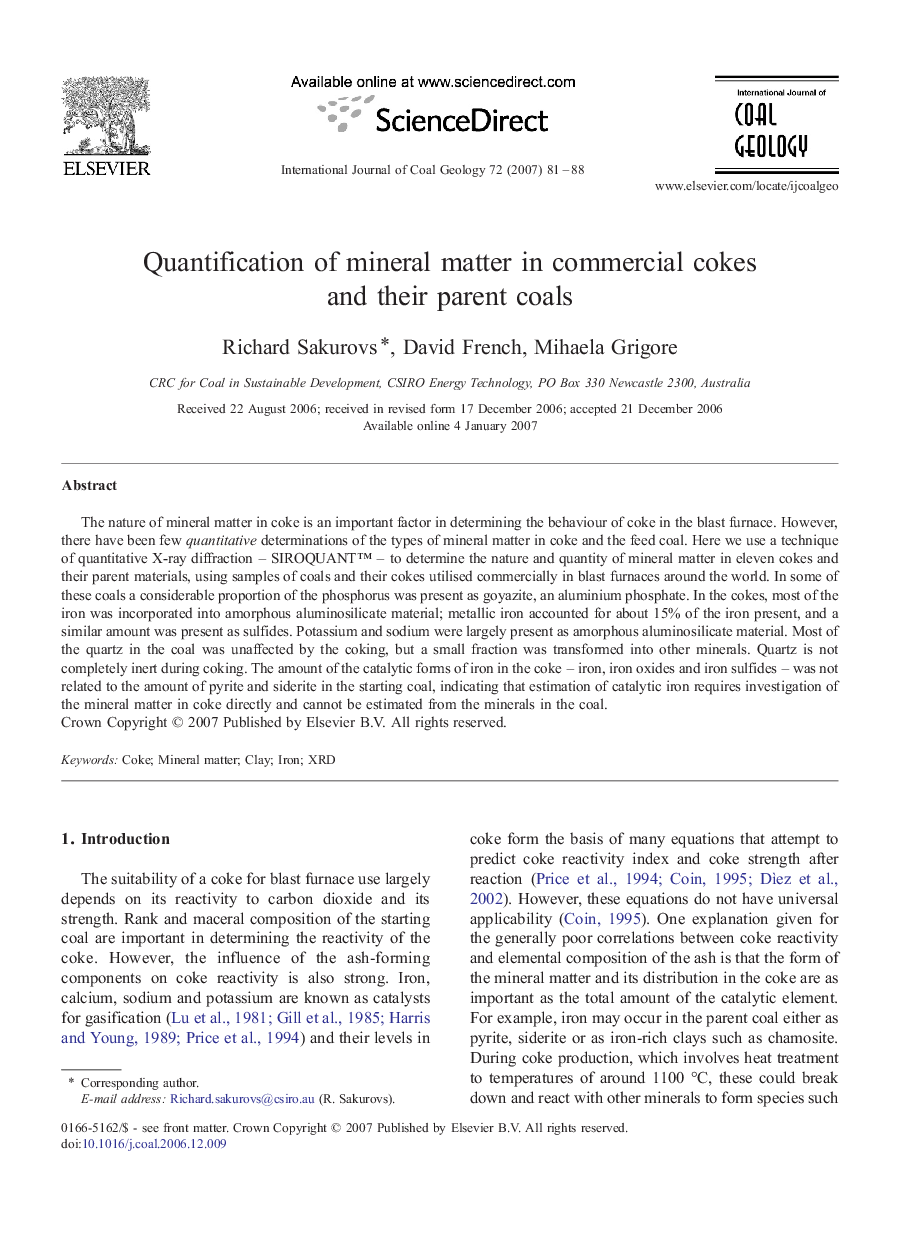| Article ID | Journal | Published Year | Pages | File Type |
|---|---|---|---|---|
| 1754210 | International Journal of Coal Geology | 2007 | 8 Pages |
The nature of mineral matter in coke is an important factor in determining the behaviour of coke in the blast furnace. However, there have been few quantitative determinations of the types of mineral matter in coke and the feed coal. Here we use a technique of quantitative X-ray diffraction – SIROQUANT™ – to determine the nature and quantity of mineral matter in eleven cokes and their parent materials, using samples of coals and their cokes utilised commercially in blast furnaces around the world. In some of these coals a considerable proportion of the phosphorus was present as goyazite, an aluminium phosphate. In the cokes, most of the iron was incorporated into amorphous aluminosilicate material; metallic iron accounted for about 15% of the iron present, and a similar amount was present as sulfides. Potassium and sodium were largely present as amorphous aluminosilicate material. Most of the quartz in the coal was unaffected by the coking, but a small fraction was transformed into other minerals. Quartz is not completely inert during coking. The amount of the catalytic forms of iron in the coke – iron, iron oxides and iron sulfides – was not related to the amount of pyrite and siderite in the starting coal, indicating that estimation of catalytic iron requires investigation of the mineral matter in coke directly and cannot be estimated from the minerals in the coal.
